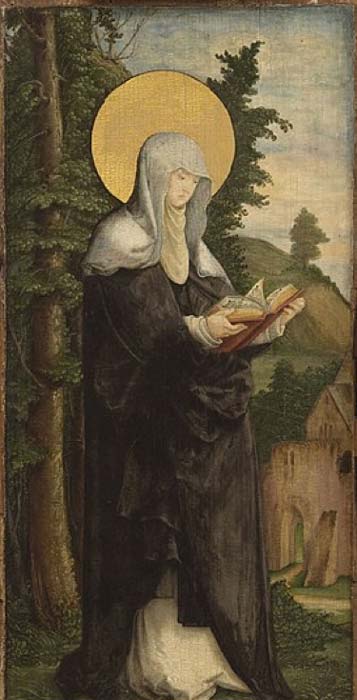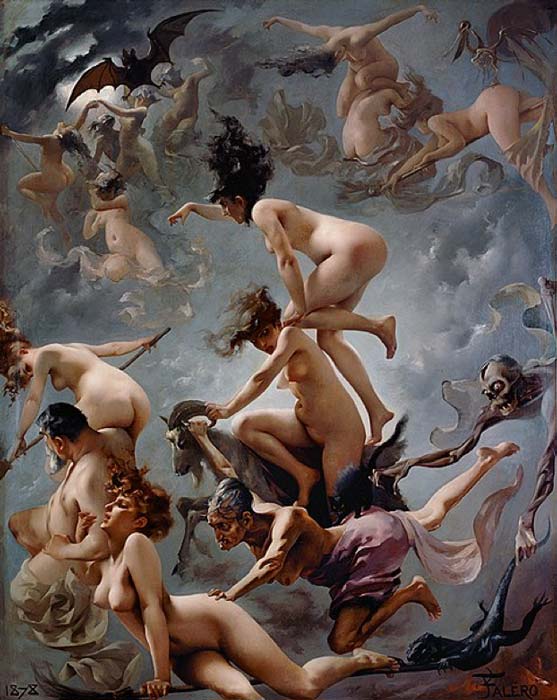
Unveiling the Mysteries of Walpurgis Night
Unveiling the Mysteries of Walpurgis Night: From Ancient Origins to Modern Revelry
(Scroll down for the Greek We Love)
As April draws to a close, the anticipation of Walpurgis Night, also known as May Eve, fills the air with a sense of mystique and wonder. This ancient holiday, with its roots intertwined in pagan rituals and Christian symbolism, beckons us to delve into its rich tapestry of traditions and legends.
Exploring Ancient Roots:
The origins of Walpurgis Night can be traced back to ancient pagan customs, where the arrival of spring was celebrated with fervor and reverence. It wasn’t until the 8th century, with the canonization of Saint Walpurga by the Catholic Church, that the holiday gained a Christian association. Yet, its pagan essence remained, blending seamlessly with Christian traditions over time.

Saint Walpurga by Master of Messkrich
The Brocken: A Place of Legend:
In the annals of history, the Brocken, the highest peak in the Harz Mountains, emerges as a focal point of myth and folklore. It was in 1668 that the Walpurgis Sabbath was firmly anchored at the Brocken, thanks to Johannes Präetorius’s seminal work, “The Blocksberg Performance.” Präetorius’s vivid descriptions of orgiastic celebrations around the mountain top captured imaginations, but it was Johann Wolfgang von Goethe who immortalized the Brocken in his iconic play “Faust” (1808). Through Goethe’s lens, the Brocken became the stage for a legendary gathering of witches, demons, and the devil himself, sparking the imagination of generations to come.
The Bonfires of Renewal:
Another integral aspect of Walpurgis Night is the lighting of bonfires, a tradition steeped in both folklore and practicality. Some believe it originated as a means of warding off witches, while others trace its roots to pre-Christian times when pagan Germans lit fires to protect their livestock and scare away wild animals during the spring equinox. The Christianization of this tradition saw it merged with Walpurgis Night, adding layers of symbolism and significance to the festivities.

Walpurgisnacht by Luis Ricardo Falero
Global Traditions and Contemporary Resonance:
While Walpurgis Night finds its heart in Europe, its spirit transcends borders, resonating with communities worldwide. From the United States to Sweden and beyond, people gather to celebrate the arrival of spring, whether through bonfires and dancing or quiet reflection on the changing seasons.
As the night of Walpurgis approaches, let us embrace its magic and mystery, honoring ancient traditions while forging new connections in our modern world. Whether atop the Brocken or around community bonfires, may this celebration of renewal remind us of the eternal cycles of nature and the enduring spirit of human resilience. Walpurgis Night beckons us to join hands, to dance, to sing, and to welcome the light of spring with open hearts and joyous spirits.
In Greek We Love

Αποκαλύπτοντας τα μυστήρια της νύχτας Walpurgis
Καθώς ο Απρίλιος πλησιάζει στο τέλος του, η προσμονή της Νύχτας Walpurgis, γνωστή και ως Παραμονή του Μάη, γεμίζει τον αέρα με μια αίσθηση μυστηρίου και θαυμασμού. Αυτή η αρχαία γιορτή, με τις ρίζες της συνυφασμένες με παγανιστικές τελετουργίες και χριστιανικούς συμβολισμούς, μας καλεί να εμβαθύνουμε σε μια συλλογή από παραδόσεις και θρύλους.
Εξερευνώντας τις αρχαίες ρίζες
Η προέλευση της νύχτας Walpurgis μπορεί να εντοπιστεί στα αρχαία παγανιστικά έθιμα, όπου ο ερχομός της άνοιξης γιορταζόταν με ζέση και ευλάβεια. Μόλις τον 8ο αιώνα, με την αγιοποίηση της Αγίας Βαλπούργκας από την Καθολική Εκκλησία την 1η Μάη, η γιορτή απέκτησε χριστιανική απήχηση. Ωστόσο, η παγανιστική του ουσία παρέμεινε, αναμειγνύοντας άψογα τις χριστιανικές παραδόσεις με την πάροδο του χρόνου.
Το όρος Brocken, ένα μέρος Θρύλος
Στα χρονικά της ιστορίας, το όρος Brocken, η ψηλότερη κορυφή στα όρη Harz, αναδεικνύεται ως επίκεντρο του μύθου και της λαογραφίας. Ήταν το 1668 που το Walpurgis Sabbath ήταν σταθερά αγκυροβολημένο στο Brocken, χάρη στο σημαντικό έργο του Johannes Präetorius, «The Blocksberg Performance». Οι ζωντανές περιγραφές του Präetorius για οργιαστικούς εορτασμούς γύρω από την κορυφή του βουνού αιχμαλώτισαν τη φαντασία, αλλά ήταν ο Johann Wolfgang von Goethe που απαθανάτισε τον Brocken στο εμβληματικό του έργο “Faust” (1808). Μέσα από το φακό του Γκαίτε, το Μπρόκεν έγινε το βήμα για μια θρυλική συγκέντρωση μαγισσών, δαιμόνων και του ίδιου του διαβόλου, εξάπτοντας τη φαντασία των επόμενων γενεών.
Οι φωτιές της ανανέωσης
Μια άλλη αναπόσπαστη πτυχή της βραδιάς Walpurgis είναι το άναμμα των φωτιών, μια παράδοση γεμάτη λαογραφία και πρακτικότητα. Μερικοί πιστεύουν ότι προήλθε ως μέσο αποτροπής μαγισσών, ενώ άλλοι ότι έχουν τις ρίζες του στην προχριστιανική εποχή, όταν οι παγανιστές Γερμανοί άναβαν φωτιές για να προστατεύσουν τα ζώα τους και να τρομάξουν τα άγρια ζώα κατά την εαρινή ισημερία. Ο εκχριστιανισμός αυτής της παράδοσης την είδε να συγχωνεύεται με τη Νύχτα Walpurgis, προσθέτοντας επιπλέον στρώματα συμβολισμού στη σημασία αυτών των γιορτών.
Παγκόσμιες παραδόσεις και σύγχρονος ενωτισμός
Ενώ το Walpurgis Night βρίσκει την καρδιά του στην Ευρώπη, το πνεύμα του ξεπερνά τα σύνορα, με απήχηση στις κοινότητες σε όλο τον κόσμο. Από τις Ηνωμένες Πολιτείες μέχρι τη Σουηδία και όχι μόνο, οι άνθρωποι συγκεντρώνονται για να γιορτάσουν την άφιξη της άνοιξης, είτε μέσα από φωτιές και χορό είτε με ήρεμο στοχασμό για τις εποχές που αλλάζουν.
Καθώς πλησιάζει η νύχτα του Walpurgis, ας αγκαλιάσουμε τη μαγεία και το μυστήριό της, τιμώντας τις αρχαίες παραδόσεις ενώ σφυρηλατούν νέες συνδέσεις στον σύγχρονο κόσμο μας. Είτε στην κορυφή του Brocken είτε γύρω από τις φωτιές της κοινότητας, μπορεί αυτή η γιορτή της ανανέωσης να μας θυμίζει τους αιώνιους κύκλους της φύσης και το διαρκές πνεύμα της ανθρώπινης ανθεκτικότητας. Η Walpurgis Night μας καλεί να ενώσουμε τα χέρια, να χορέψουμε, να τραγουδήσουμε και να υποδεχτούμε το φως της άνοιξης με ανοιχτές καρδιές και χαρούμενα πνεύματα.
*COOPER JOHN-MICHAEL, MENDELSON, GOETHE, AND THE WALPURGIS NIGHT
THE HEATHEN MUSE IN EUROPEAN CULTURE, 1700-1850, UNIVERSITY OF ROCHESTER PRESS
*JACOB GRIMM, TEYTONIC MYTHOLOGY, CAMBRIDGE UNIVERSITY PRESS
* CARL LINDAHL, JOHN MCNAMARA, JOHN LLINDOW , MEDIEVAL FOLKLORE:
A GUIDE TO MYTHS, LEGENDS, TALES, BELIEFS AND CUSTOMS, OXFORD UNIVERSITY PRESS

